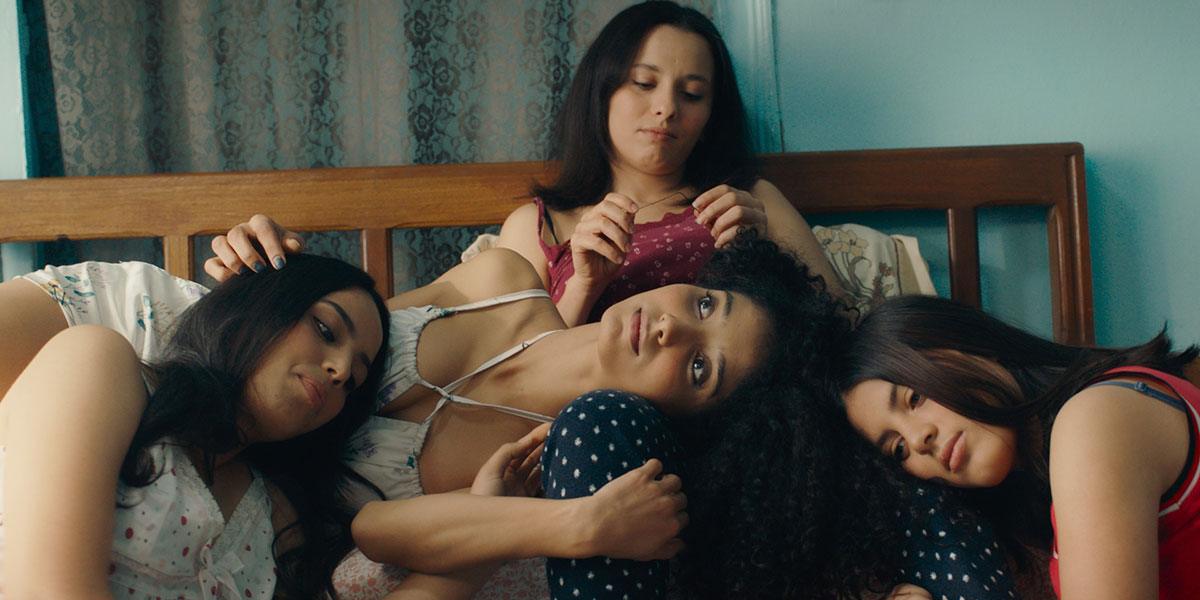Four Daughters
Natalie Portman Teaches Acting
Content Advisory: Rape and Sexual Assault
A Tunisian woman and her two youngest daughters tell their story with the help of actors playing the two eldest daughters in Four Daughters. Olfa Hamrouni is a Tunisian woman, whose two eldest daughters Ghofrane and Rahma disappeared in 2015 when they were 16 and 15 years old respectively. With her youngest daughters Eya and Tayssir and actors Ichraq Matar and Nour Karoui standing in for Ghofrane and Rahma, Olfa tells her story of the challenges she faced raising four daughters.
Four Daughters Synopsis
Four Daughters is a hybrid documentary directed by Kaouther Ben Hania. The film tells the story of Olfa Hamrouni, occasionally played in reenactments by Hind Sabri, whose two youngest daughters Eya and Tayssir still live with her, while her oldest daughters Ghofrane and Rahma were “devoured by the wolf.” With the help of the dramatizations, the sequence of events leading to Olfa’s daughter’s disappearance is recreated. This includes Olfa’s abusive partners (all played by Majd Mastoura), rebellious goth phases, and conservative Islamic practices.

My Thoughts on Four Daughters
While Four Daughters is a documentary that relies heavily on reenactments, they are presented in an incredibly fourth-wall-breaking fashion. There is one particular moment, where one of the daughters, Tayssir, is recreating a confrontation with his abusive step-father and actor Majd Mastoura ends up getting disturbed and walking away, with Tayssir proceeding to explain how she already moved on from the incident, all while playing with a prop knife in her hands.
Four Daughters is purposely vague about how and why Olfa Hamrouni’s eldest daughters disappeared, though she blames her failings at being a mother. Indeed, the film makes it appear that Olfa’s response to a teenage goth phase was so harsh that Ghofrane and Rahma began adopting more conservative Muslim practices, such as wearing Hijabs that cover everything except their eyes. This all leads to the big reveal of what exactly happened to Ghofrane and Rahma, as the film makes the switch from reenactments to archive news footage.
The big reveal of Four Daughters undoubtedly leaves an impact, especially with the knowledge that Ghofrane and Rahma were still so young at the time of their disappearance. It also marks the point where the film truly feels like a documentary. I’m not completely against hybrid formats, but I have found the reenactments of Four Daughters to be too casual and not that polished. It almost feels like Kaouther Ben Hania didn’t shoot enough for proper narrative reenactments, so she also included the behind-the-scenes b-roll.
That said, Four Daughters is still an interesting documentary about the age-old fear of the sins of the parents being passed on to the children. It is said towards the end of the film that daughters usually follow in the footsteps of their mothers until a generation comes along that does things differently. While Eya and Tayssir are representative of this new generation, Olfa Hamrouni fears the curse continued with the way she treated Ghofrane and Rahma.


 Get ready for a vibrant and fun-filled painting experience with Splatter Painting in Toronto!
Get ready for a vibrant and fun-filled painting experience with Splatter Painting in Toronto!  Unleash your creativity with an energetic splatter painting session
Unleash your creativity with an energetic splatter painting session 